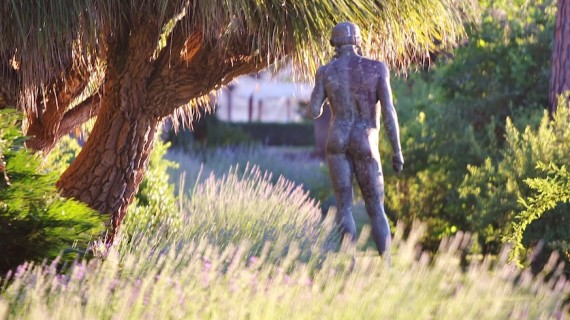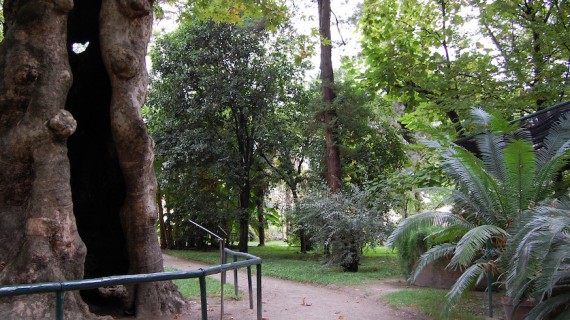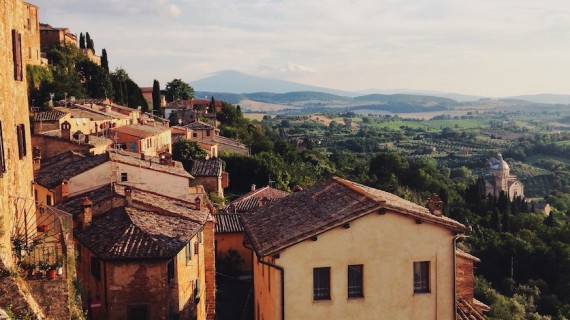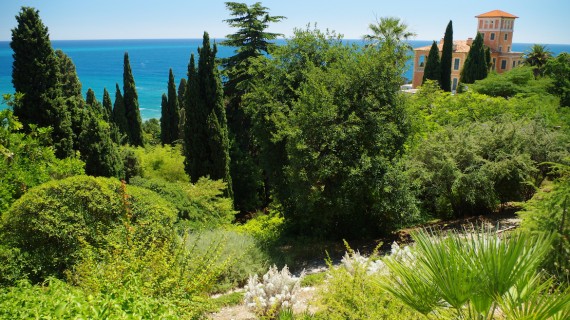Between natural jewels and Renaissance villas, we can find the Euganean Hills, which the British poet Percy Bysshe Shelley called ‘islands in bloom‘ because here we can find alpine and Mediterranean flora.
These areas have a very ancient history because they emerged from the waters about 40 million years ago due to magma shifts. So it was that the subsoil produced a generous land, full of vines and olive trees already in Roman times. The Euganean Hills park includes 15 municipalities, one of which is Montegrotto, the ideal starting point for discovering the area.
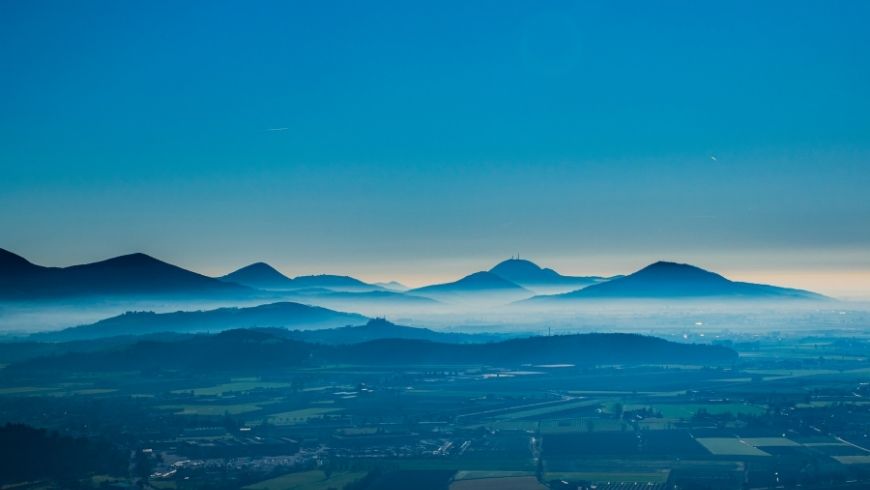
Montegrotto
I start right here. The city of Montegrotto is known for its thermal waters, already famous during Roman times. The growth of the city has been directly linked for several centuries to the thermal water springs that surround this area. These thermal springs led to an ever-increasing expansion of the center and the Euganean area in general.
In addition to this, the city is home to the small International Museum of Art Glass, the Butterfly Arc, or the butterfly house, and some important archaeological sites from the Roman era that you can visit on your own or by taking tours organized by the municipality.
Besides there are also many possible excursions to be made and, among others, I would like to recommend the one on Monte Cinto up to the ‘buso dei Briganti’ where the steps, that are carved into the rock, tell me of people who, in the 19th century, due to poverty had no alternative than to assault wayfarers and then hide among the rocks.
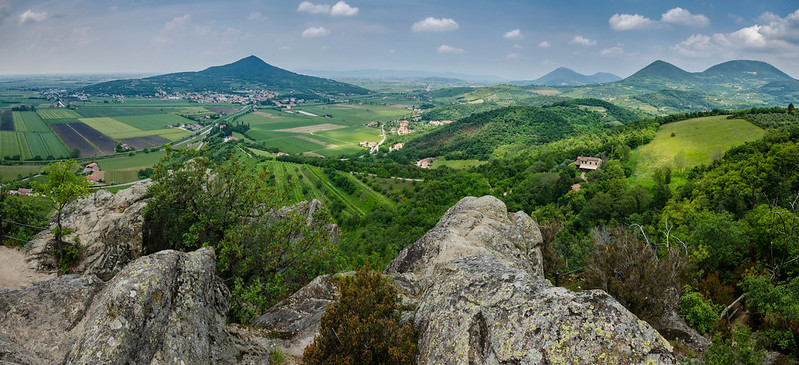
Also worth mentioning is the ascent to Monte Ceva among eucalyptus, agaves, and prickly pears among dark lava and light limestone rocks.
On the summit of Monte Gemola, you can see Villa Beatrice d’Este, which was a convent in the 13th century and now is home of a nature museum. For more information, contact 049/8910189.
Valsanzibio
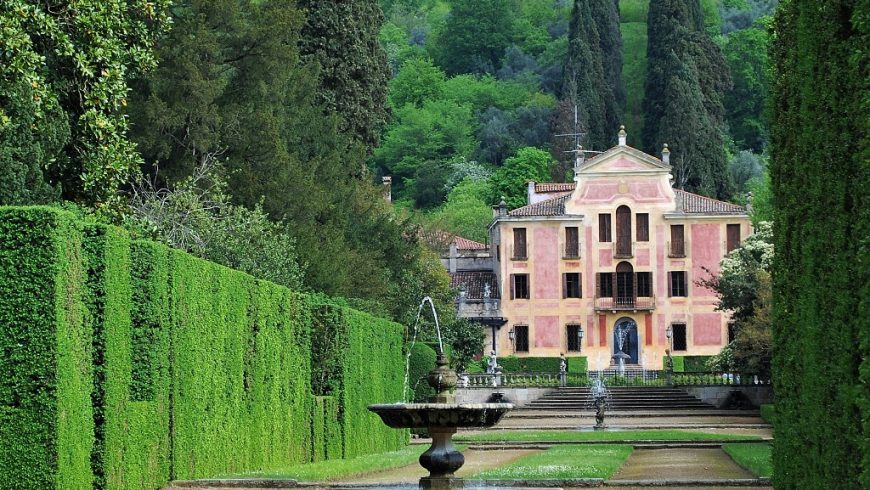
Villa Barbarigo Pizzoni Ardemani in Valsanzibio is another beautiful union of nature and art. Legend says that the landscape architect Andre la Notre took inspiration from here for the gardens of Versailles.
This 350-year-old botanical beauty was commissioned by Francesco Barbarigo as a vote to save himself from the plague. We are talking about 300 tree species, the highest density of box hedges in the world, and a 1,600-metre labyrinth.
Bernini, a papal architect specializing in hydraulics, created this. The route has a religious – allegorical significance. For example, the labyrinth has seven paths like the deadly sins.
This garden has been rewarded as the most beautiful garden in Italy and the third-best in Europe … Do not miss a look at what in the 17th century was the main entrance to the villa that could only be reached by water, the portal of Diana, which was the beginning of the path to salvation. For more information valsanzibiogiardino.com
Monselice
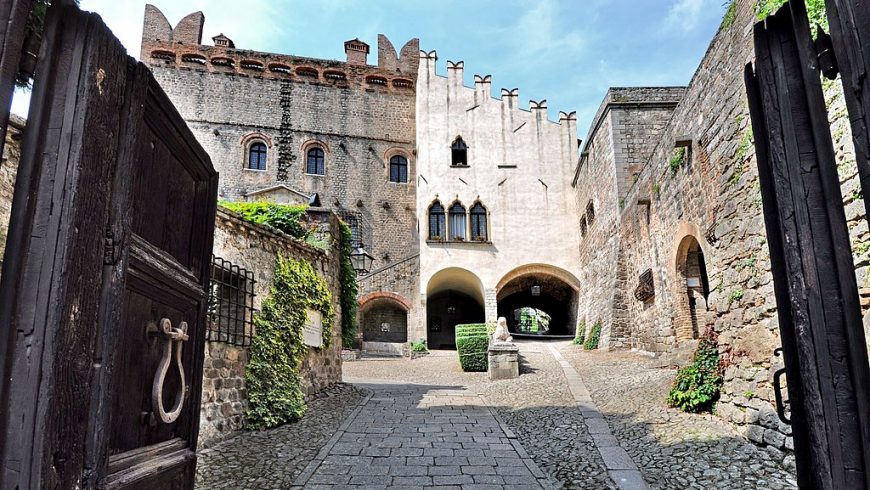
Nature is also predominant in Monselice, which is dominated by the hill of the Rocca. I recommend climbing it on foot so that you can stop at the Castle of Ezzelino da Romano of the Carraresi and the Venetian Republic. The castle dates back to the 11th century and today it is a jewel rich in furnishings and fittings, which was made possible thanks to counting Cini who saved it from decline around the 1930s.
Villa Nani Mocenigo
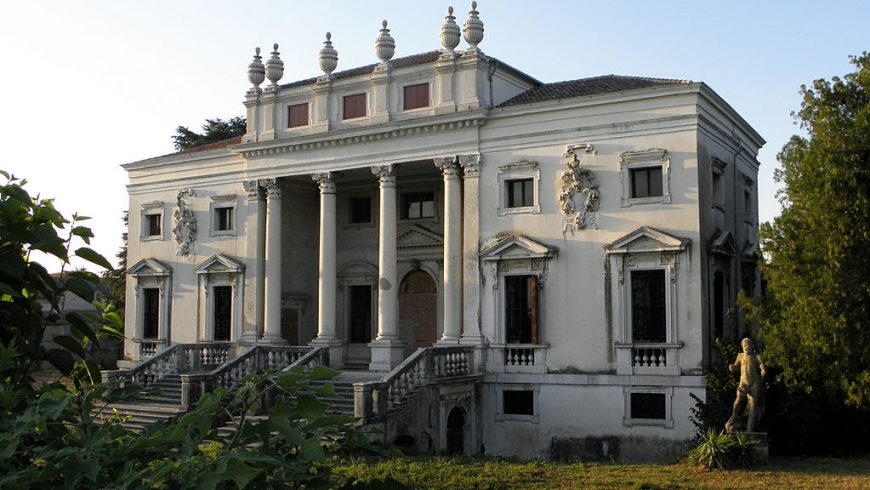
My tour continues to the walls of the 15th-century Villa Nani Mocenigo with its wonderful staircase and statues of dwarves that recall the family name.
I take Via Sacra which is the only place, other than Rome, where one could obtain a plenary indulgence. The beautiful path that leads us to the small church of San Giorgio was created by Scamozzi who made the six chapels among the cypress trees. The halfway point is the front of the Villa Duodo, but with good weather, it is possible to arrive at the top of the hill where we can find the remains of the Mastio Federiciano, which was a defensive tower commissioned by Frederick II of Sweden.
Here you can also find an amphitheater surrounded by nature. This is the Monte Venda amphitheater, which is a wonderful theatre surrounded by vineyards. It is born from the idea of Franco Zanovello, a winegrower. Now here there are concerts and shows. For more information contact info@anfiteatrodelvenda.it
In the north of the hills there is the 16th-century Villa dei Vescovi, now a Fai heritage site. Situated high over the vineyards, it was frescoed by the Flemish painter Lambert Sustris. It is the most important pre-Palladian residence of the Renaissance. It was frequented for centuries by artists.
Praglia Abbey
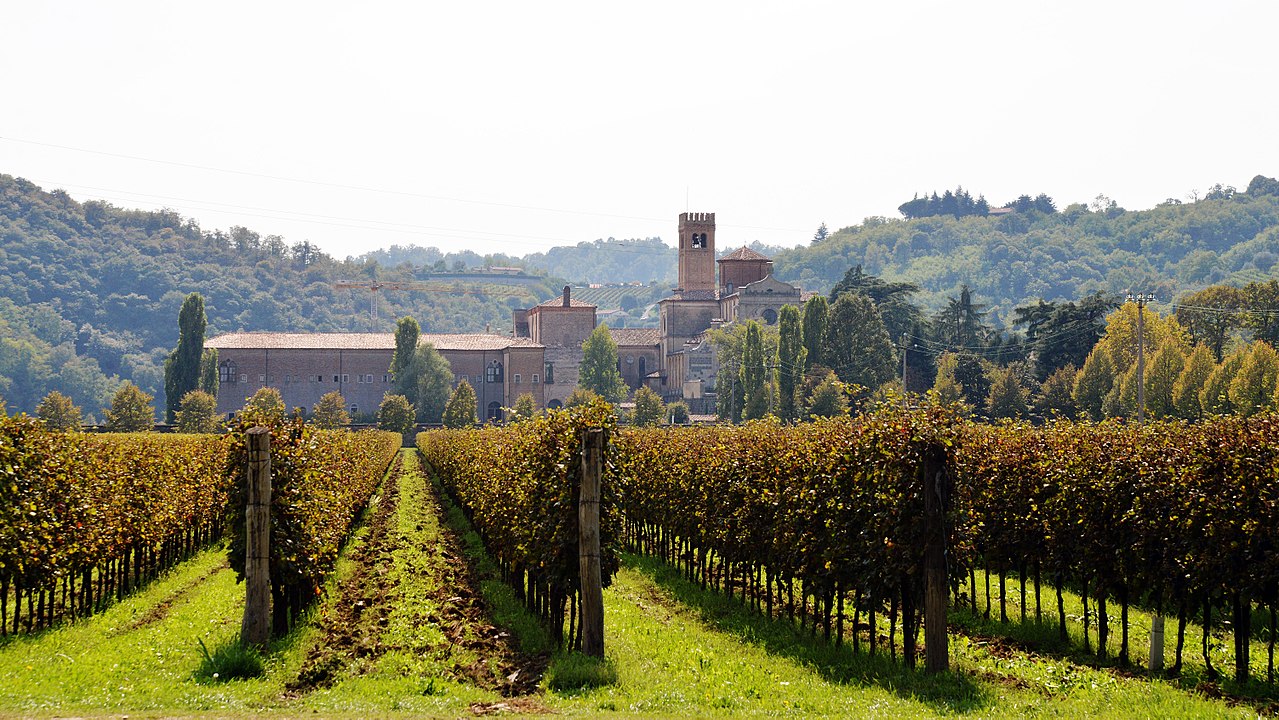
Worth a visit to the 11th-12th century Praglia Abbey. It is located in the territory of Teolo at the foot of Monte Lonzina. Worthy of note is the hanging cloister, where we can admire a dedication by the writer Fogazzaro, who set part of his novel ‘Piccolo Mondo Moderno’ here. It still hosts about 40 Benedictine monks. They produce wine, natural herbal cosmetics, and herbal products. Galileo Galilei and some Jews found refuge here during the Nazis’ round-ups.
Arqua Petrarca
Also this place, Arqua Petrarca, is worth a visit. Here it feels like taking a trip back to medieval times. It is located on the slopes of Monte Piccolo and Monte Ventolone. Besides you must not miss the church of Santa Maria Assunta on whose parvis you can see Petrarca’s tomb and his residence. For more information call 0429718291.
Battaglia Terme
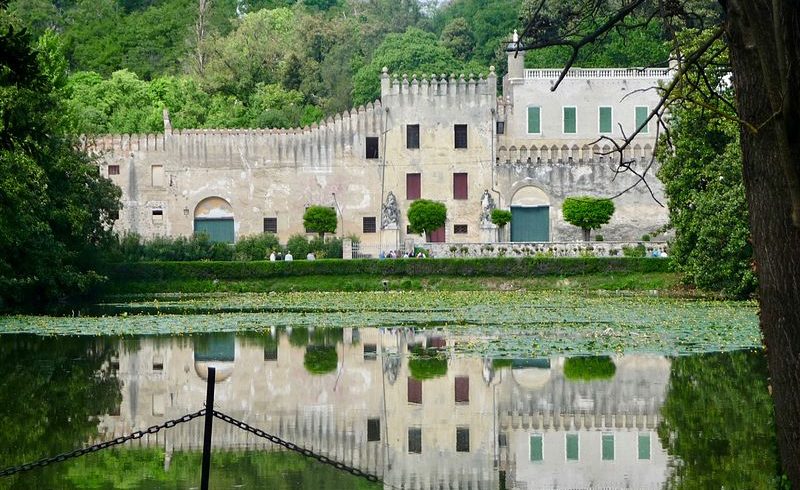
Finally, there is the Catajo Castle at Battaglia Terme. Home of the captains of the venture, it houses 350 rooms, some frescoed by Zelotti, who was a pupil of Veronese. Also worth a visit is the large park with its statues and the courtyard of the Giants, which in the past was used for theatrical shows.
Cover image: Catajo Castle, Battaglia Terme, Euganean Hills (Padua), photo by Marcok, via Wikimedia
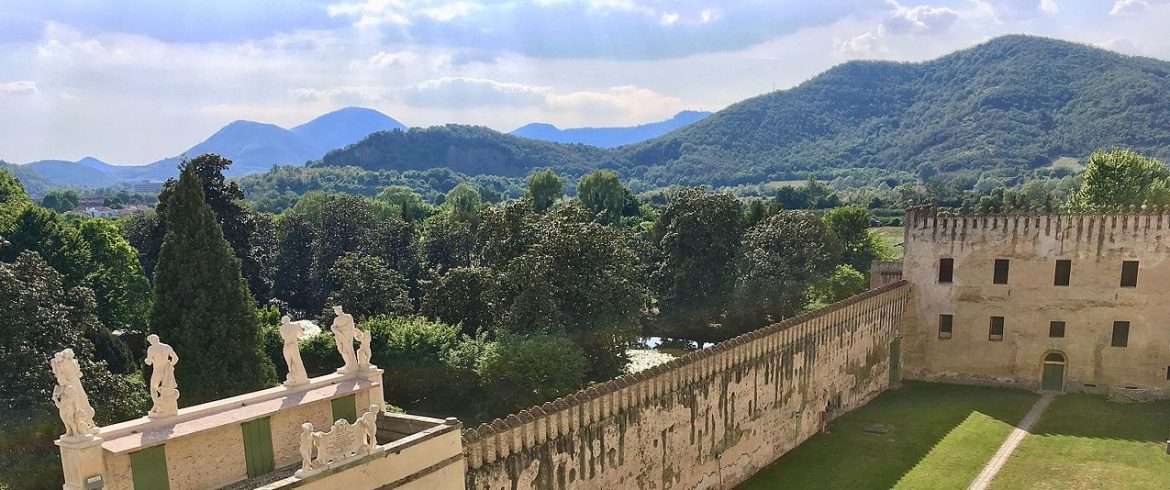
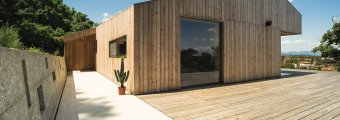 B&B La Mugletta – Green Bed & Breakfast in Teolo, Padova, Veneto, IT
B&B La Mugletta – Green Bed & Breakfast in Teolo, Padova, Veneto, IT 